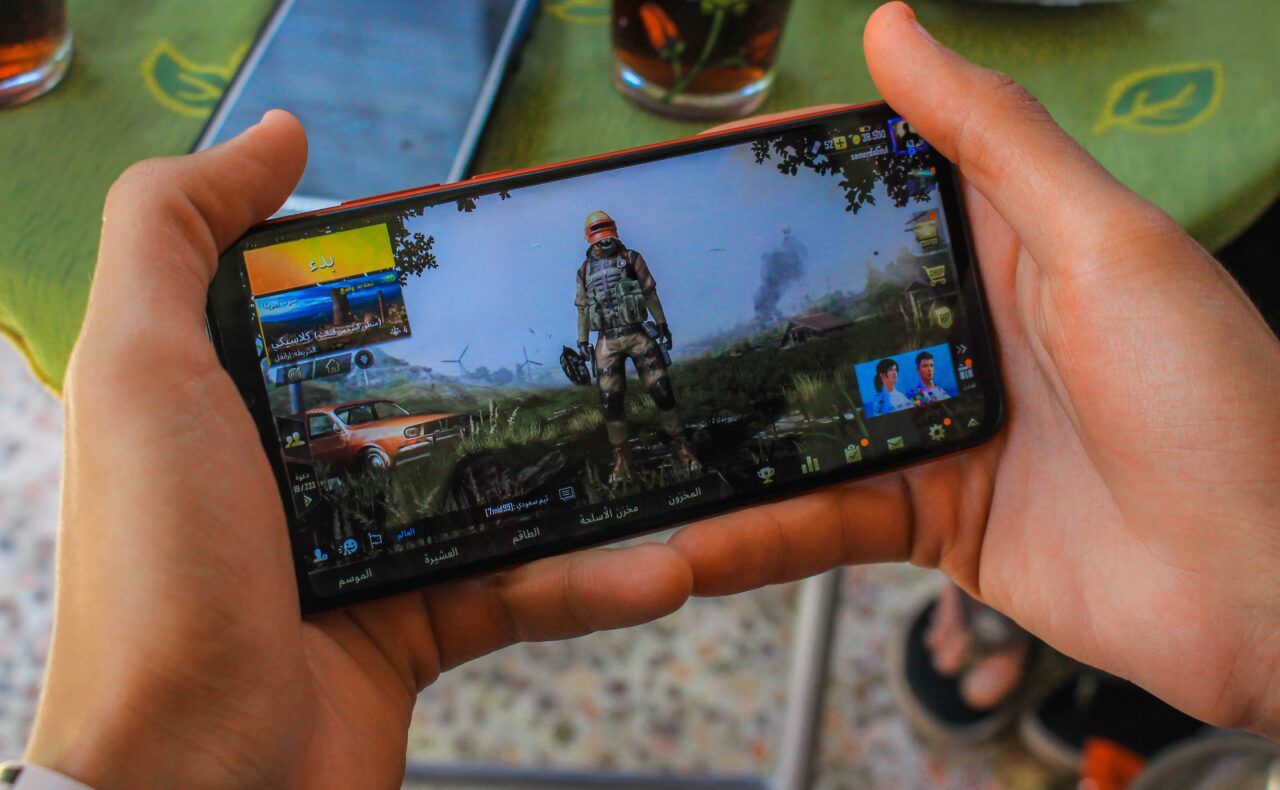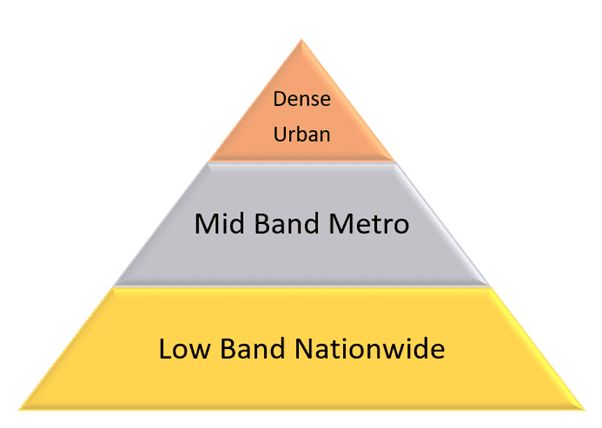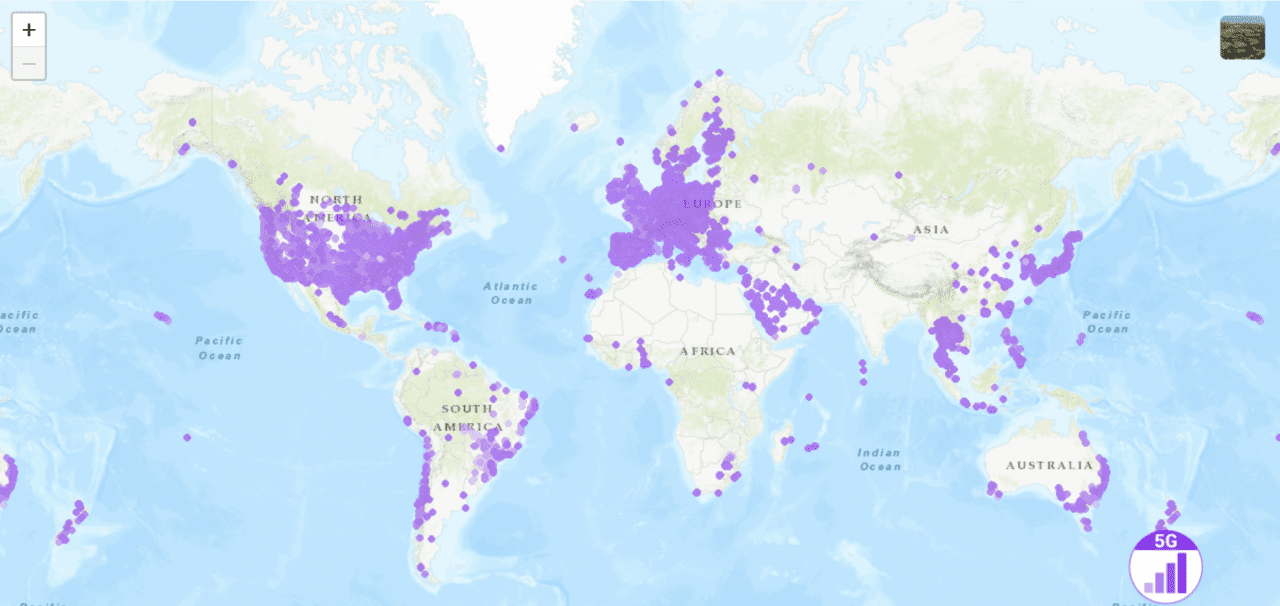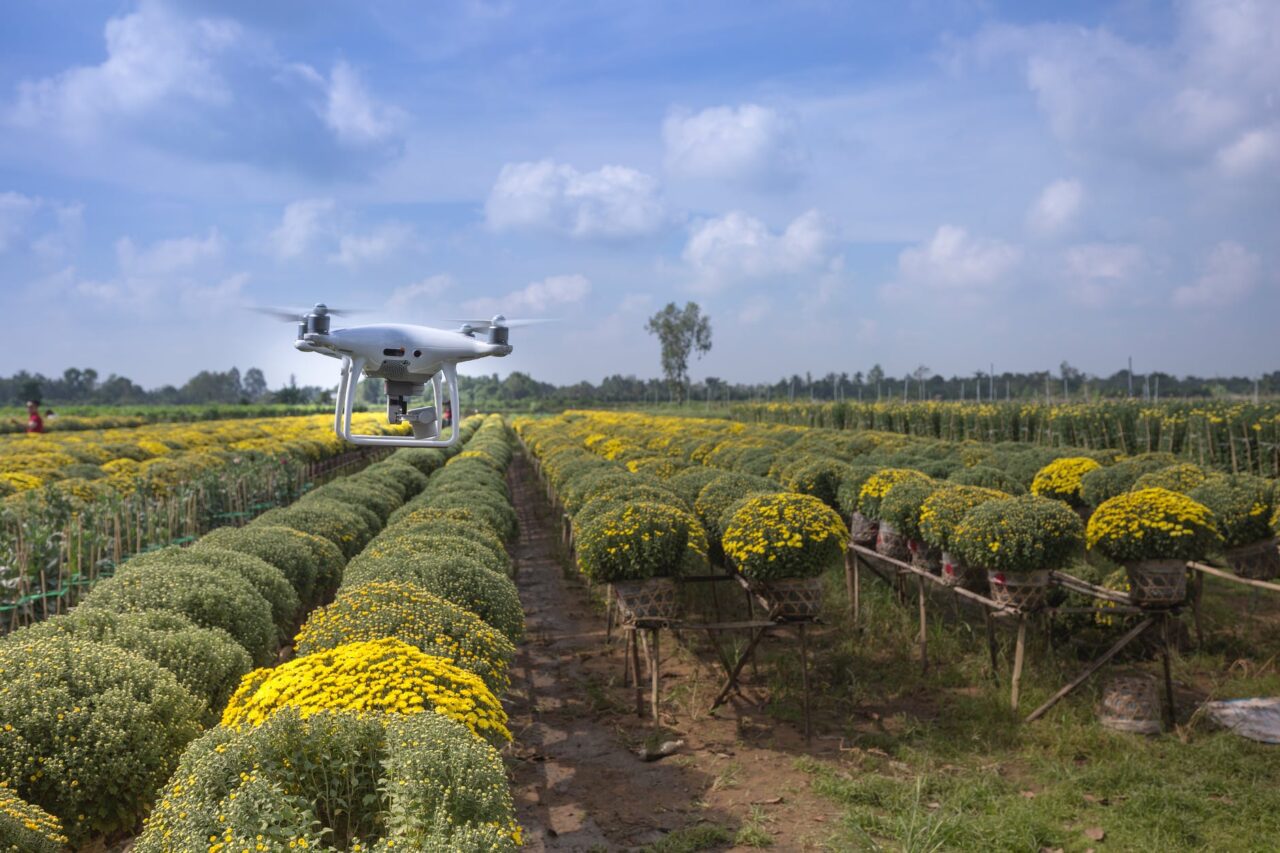If you are in the market for a new smartphone, you’re probably wondering what is 5G? There is no doubt that the new technology has become quite the buzzword in recent years. And smartphone manufacturers and mobile carriers have been promising a true generational leap, making the purchase of a 5G handset a good investment.
However, most consumers may still have a hard time understanding the benefits and uses for this new technology. Faster Internet speeds are probably what gets mentioned most about 5G these days. But the new cellular connectivity standard will provide far more than that in the future.
There are some real differences in the way 5G works compared to 4G or 3G. Here is why you should care about 5G and why this technological innovation could transform a lot of different industries.
What is 5G cellular technology?
5G is the fifth-generation cellular connectivity standard designed for all types of connected devices, including:
- smartphones
- tablets
- PCs
- home appliances
- cars
- and more.
Compared to the still capable 4G standard, 5G networks have much greater bandwidth. And they can also connect more devices in a way that is more efficient than before.
Ultimately, 5G follows previous generations of cellular technology such as 3G, which was what launched the concept of smartphones. But 4G is what let us browse faster. And it let us do more things, like stream our favorite football game or watch a film on the move.
3G was faster than 2G, and 4G was faster than 3G etc. They are all faster than the last. But that is not all.
5G has more capacity and fewer delays. It lets us connect to more devices and services. We have seen the range of Internet-connected devices, sometimes referred to as the Internet of Things (IoT), expand to:
- smart streetlights
- wind turbines
- fridges
- salmon farms
- and more
5G technology is designed to keep endpoints talking and stay connected without dropouts. Unlike 3G and 4G, the backend infrastructure can be software-defined. Software defined networks (SDN) allow mobile operators to divide networks and data into multiple virtual networks.
Operators can share and sell virtual networks to different organizations or communities. Ultimately, this should provide more sellable solutions for the carriers, with the ability to provide high-speed connections to everyone.
The history of mobile Internet – 1G to 5G
Mobile telephony has been around for a long time. The first commercial cellular network was launched in Japan by Nippon Telegraph and Telephone (NTT) in 1979. It was localized to the Tokyo area and it quickly spread across Japan shortly after.
We have seen massive changes since then. And most of these started to occur in what has been called the wireless revolution. The wireless revolution of the 1990s provided a shift from wired to wireless technology.
This revolution brought with it commercial wireless technologies like:
- cell phones
- mobile telephones
- pagers (who remembers pagers?)
- computer wireless networks
- and even the start of the wireless Internet
Before this revolution, data transmissions were sent as analog to digital and back again through radio frequency technology.
1G to 5G mobile Internet
Throughout history, wireless technology has grown and become faster. Before we jump into 5G in more detail, let’s look at the history of mobile Internet from 1G to 5G.
What is 1G mobile Internet?
1G started way back in 1979 with NTT in Japan. 1G was later rolled out to the United States in 1983. 1G had some major issues, such as poor coverage and low sound quality.
There was no roaming or the ability to go from tower to tower. Calls were not encrypted, so people using radio scanners could listen in on calls.
What is 2G mobile Internet?
2G was rolled out to Finland in 1991. With this new generation came call encryption support. Calls were now digital and they no longer had the hiss and crackling sounds that were a big problem with 1G.
There were several different versions of 2G. Originally, 2G had a speed expectation of 9.6 kbit/s. This ultimately evolved into EDGE, which allowed up to 500 kbit/s speeds. Things such as texting, or Short Message Service (SMS) as it is sometimes known, were made possible and widely adopted during the 2G era.
What is 3G mobile Internet?
3G was launched in 2001. It made data roaming possible as the technology started to become more standardized. 3G provided increased transfer speeds that were 4 times faster than 2G.
During this time, smartphones became mainstream products. The release of the iPhone in 2007 completely disrupted the competition, which was still using real keyboards and no touchscreens. Eventually, smartphones had a massive impact on operators’ networks and the amount of data being transferred.
What is 4G mobile Internet?
4G was first launched in Sweden and Norway in 2009. And 4G is still the de facto standard across the globe.
Thanks to much faster Internet speeds, 4G made high-quality video streaming possible on cellular networks. And it also provided a way for people to have high-definition (HD) video calls and video conferencing right on their phones
One drawback about moving from 3G to 4G was that we all needed a new SIM card. Phone manufacturers needed to provide new chipsets for the devices going from 3G to 4G, which meant that the amount of money being spent on the new technology was vast.
Anyway, smartphones had become a commodity at this point. And the most used device throughout the day for many people. The need for faster devices and Internet speeds helped the likes of Apple become the first trillion-dollar company.
Introducing 5G
5G was introduced in July 2016. And operators deployed it worldwide in 2019. Experts predict the growth and adoption of 5G to expand at such an alarming rate that an expected 1.7 subscribers will be using the networks by 2025.
How is 5G better than 4G LTE?
Radio waves have been providing different forms of wireless communication for over 120 years. They are used for:
- radio
- TV
- cellular networks
- and Wi-Fi.
Cellular networks use these same radio waves to communicate.
5G has three different frequencies which it uses. The frequencies are traditionally known as Low-band, Med-band, and High-band.
Table 1 – Frequencies used by wireless devices
| Frequency | Description |
| Low-band | Used in TV broadcasts and they are used in older cellular communication. These are exceptional for covering large, dispersed areas. |
| Med-band | Used for 4G and Wi-Fi, and they are exceptional at adding capacity to the network. |
| High-band | Used in sensors in cars, aircraft, and communications with satellites. |
The frequencies of the Low, Mid, and High are not new in the world of wireless communications. However, what is new is how well 5G uses them.
5G speed and capacity
One key area where 5G is better than 4G is the speed and capacity in which it can carry information. The problem is there is a limitation on how much information radio waves can carry.
The older technology was a bit like a single-lane road, where information quickly got congested. With 4G, the technology increased the way data was compressed and it added new frequencies that could be used.
Doing these two things ultimately increased the capacity by a magnitude of 10 times. It meant that we could use smartphones and cellular devices with much faster speeds then before.
But if you’re like me at a sporting event or a concert, capacity still isn’t always enough. I can see that I have full bars on my smartphone, but nothing is coming in or out of the network because of too many people and not enough network capacity.
With 5G, we will see an increase in the overall capacity by a magnitude of a further 10 times again. It will allow us to livestream the touchdown, home run, and hattrick of a football game to all our friends and community, no matter how many people are in the venue with you.
Ultimately, this is important because the amount of data each person uses increases at a scale of 60% each year – people are starting to stream more videos on more devices, and this is only going to increase going forward.
5G is much more efficient than 4G
A wider range of devices can connect to 5G compared to 4G. 4G operates in a way that when it initializes communication, it sends data over a wide area. Despite it only needing the information where the phone is located. It is much more efficient, targeting each device, phone, and endpoint with precision.
5G can handle 1 million devices in a single square kilometer. This precision will help reduce the noise in 5G radio waves. This is very important for future use as well, because the number of devices connected to cellular technology increases by a staggering 25% each year.
5G is more than just for phones. Early generations of cellular technology were created for smartphones. 4G was a massive leap forward that allowed people to stream music and video when they are away from their Wi-Fi network.
Ultimately, 4G wasn’t optimized for devices with small batteries. It didn’t have the response times to handle control of devices remotely, such as robotics. The key aspects here are that 5G is more stable and responsive than previous generations of mobile Internet.
5G network slicing
5G allows the network to act as if it was part of many different networks. For example, an operator can allow the network to be separated off for emergency services.
Network slicing could be used for an ambulance to use its own separate network and speak directly to a hospital or health provider. It could also allow doctors to begin to diagnose the patient even before they arrive at the hospital, while they are still in the ambulance.
This separation and containment of the network are known as network slicing: Gamers may be sold a low latency, low response time slice that allows them to play games with no noticeable lag on their favorite gaming device, no matter where they are located.
Using software-defined networking (SDN), operators can separate out the network and configure it to provide the access each slice needs.
5G security
5G brings some big changes to security. The use of encrypting identifiers is an amazing thing. And network slicing is ultimately a paradigm shift from the backend networks of 4G and older generations.
However, there are still other ways users can be tracked. And it is the operators’ and the regulators’ duty to decide how they guarantee the trustworthiness of 5G technology. I think it’s safe to say there is always room for improvement.
5G mutual authentication
5G utilizes a technology called Service-based architecture (SBA) for the cellular network. This means that security protocols use protocols like Transport Layer Security (TLS) 1.2 and 1.3 to protect the communication. The main point of SBA security is that authentication and transport protection between the network functions must use TLS, over an OAuth2 authentication.
SBA also provides an improved interconnect security using new security protocols designed by the 3rd Generation Partnership Project (3GPP). For those very clever people out there, authentication procedures using EAP-AKA and 5G AKA authentication methods are used.
IP-based protocol stack
With 5G, the Internet Protocol (IP) stack is broken down into two areas:
- control plane stack
- user plane stack
Here is an explanation of each stack:
- The control plane determines how the signaling and controlling messages are sent and forwarded.
- All user data is sent and forwarded through the user plane.
Both planes have access through the Physical Layer, the MAC layer, the Radio Control Link (RCL) layer, and the Packet Data Convergence Protocol (PCDP) layer.
Signaling data integrity
Key derivation and distribution provide user and signaling data confidentiality protection through cyphering. It includes user and signaling data integrity and replay protection with 128-bit and 256-bit key encryption support.
For every encryption key in a network, there is a corresponding key stored in the User Equipment (UE). And a root key in the Universal Subscriber Identification Module (USIM).
When will 5G be available?
Depending on where you are in the world, it has already started to roll out. Within the United States and Western Europe, 5G networks are already being deployed. And we are likely to see more and more locations being made available.
In addition, we are likely to see a slow demise of 4G, though we are going to continue using the older technology until 5G is fully rolled out.
What is the speed of 5G?
There are two measurements of speed:
- the throughput in which information can occur
- and the latency in which information can travel.
For example, the latency of a 3G network is expected to be about 86.4 milliseconds (ms). And for a 4G network, we would expect a latency of 39.2ms. When it comes to 5G, we can reduce latency to well below 10 ms.
When measuring the average speed that we can upload and download information, we can achieve an average speed of 2 megabits per second (Mbps) with 3G. With 4G, we could achieve an average data upload speed of 30Mbps. However, with 5G we could theoretically achieve a speed of 60Mbps all the way up to an eye-watering speed of 1 gigabit per second.
How does 5G work?
5G builds upon 4G, however, it has 3 core concepts that improve on 4G capabilities. These are:
- With Massive Multiple Input & Multiple Output (MIMO), 5G transmitters are designed to deliver wireless data to more devices at a much higher capacity.
- Beamforming provides a much more precise way of directing wireless signals to an individual device.
- Millimeter waves can be used to provide phenomenally high-frequency radio waves that give cellular devices gigabit speeds over a short distance.
High-band 5G is the key to fast speeds
5G speeds depend on millimeter waves. They allow for the connection to be blisteringly fast but only over a very short distance.
Low-band
Low-band 5G connections use some of the same frequencies as 4G. However, they deliver the information faster over longer distances.
It is the technology that will provide the connection to rural areas. And low-band frequencies are the same that were used for analog TV broadcasts.
One low-band cellular tower can service hundreds of square miles. Speeds are very drastically dependent upon the distance to your nearest tower, and they will also change if you are indoors versus outdoors. However, a theoretical speed of 300Mbps is feasible.
Mid-band
The use of mid-band is often referred to as a ‘metro’ style. This means that it is built up over a large area, often around a city, but there will be some differences from county to county.
Not all countries will use a low-band as their entry-level of 5G. And countries may jump straight to the mid-band 5G connection as the expanse between cellular towers isn’t as vast. In the very near future, we could expect mid-band connections to provide speeds in a 600-900Mbps range.
High-band
High-band utilizes the millimeter wave (mmWave) technology, which can be used in dense urban environments. This technology is well suited for sporting arenas, concert venues, and convention centers.
High-band has a maximum range of 1 mile. However, where there are large buildings such as skyscrapers and environments that impede the waves, the range is reduced to about ¾ of a mile.
In addition, one observation I’ve noticed while testing high-band 5G is that some glass treatments and films cause the mmWave signal to drop entirely. Anyway, real-world speed tests have 1.5Gbps and a latency of single digits.
Where can I get 5G coverage?
The global rollout of 5G has already started. Most larger populated areas in the United States and Western Europe have coverage already. This has been extended out to Australia, parts of Asia, and the Middle East.
What phones support 5G?
Phones that support 5G include the following Apple devices:
- iPhone 13 Pro Max
- iPhone 13 Pro
- iPhone 13
- iPhone 13 Mini
- iPhone 12 Pro Max
- iPhone 12 Pro
- iPhone 12
- iPhone 12 Mini
Android devices that support 5G include:
Google:
- Google Pixel 5a
- Google Pixel 6
Motorola:
- Motorola Razr 5G
- Motorola One 5G Ace
- Motorola One 5G
OnePlus:
Realme:
- Realme 8 5G
Samsung:
- Samsung Galaxy Note 20 Ultra 5G
- Samsung Galaxy S21 FE 5G
- Samsung Galaxy S21 5G
- Samsung Galaxy S22
- Samsung Galaxy S22+
- Samsung Galaxy S22 Ultra
- Samsung Galaxy A13 5G
- Samsung A32 5G
- Samsung Z Flip 3 5G
- Samsung Galaxy A90 5G
Sony:
- Sony Xperia 1 II
TCL:
- TCL 10 5G
Xiaomi:
- Xiaomi Mi Mix 5G
Be aware that this is not an all-encompassing list. However, it is the list of 5G phones we have been able to find while doing our research.
What are the potential uses of 5G?
The use cases for 5G are endless. But some really good uses have already started surfacing in the farming industry. The world’s population is growing at a rate of 1.1% per year.
That is around 83 million new people every year. This means that with the growing population and water shortages in many parts of the world, we need to be better at increasing crop yields.
Farming
We need to be able to provide sustainable crops while using fewer fertilizers. Basically, the challenges for farmers are massive.
What do 5G and farmers have to do with each other? Streaming their favorite music inside their air-conditioned tractor? Hardly.
5G helps by allowing tiny sensors that can measure the moisture and fertilizer needs in new advanced machinery. These sensors can report back how the soil is doing for up to 10 years with the new cellular technology.
Likewise, the use of self-driving farm machinery, when things are mission-critical, allows all the different components to work autonomously and coordinate far better than we can. If you have seen the first season of Clarkson’s Farm on Amazon Prime, you will understand how difficult it really is.
Gaming
Gaming is another key area. The gaming industry is growing massively. We’ve seen Microsoft purchase Bethesda for $7.5 billion. Followed by a purchase of Activision Blizzard for an all-cash $68.7 billion deal.
The future of all these acquisitions is to allow Microsoft a firm footing in the metaverse. 5G networks will help make the metaverse real for a majority of people in the future.
In addition, the growth of online gaming has been astronomical. And Microsoft has moved towards software and solutions as a service.
Gaming as a service is already well within its grasp. And 5G and its use of software-defined networking will allow service providers, such as Microsoft, to put cellular-connected endpoints at the edge of the network and benefit from lightning-quick access.
Medicine and healthcare
Medical and healthcare is another major growth area: The UK government has already started rolling out 5G to its lamp posts. This is aimed at providing social care for patients who reside at home.
It has allowed patients to keep connected to things such as biomonitors to detect if they are hydrated. 5G also provided access to video systems, allowing pharmacists to remotely check if patients are taking medication as prescribed.
Is 5G safe to use?
Since its introduction, there have been some safety concerns about the deployment of 5G.
Public Health England and Ofcom in the United Kingdom
In the UK, an organization called Public Health England (PHE) has spent a lot of time and expense reviewing if there are any health matters related to the radiofrequency electromagnetic fields (EMF) or radio waves. The PHE advises the UK Government on any health effects that may be caused by EMF emissions.
Regarding 5G, the PHE’s view is that “the overall exposure is expected to remain low relative to guidelines and, as such, there should be no consequences for public health.” In addition, Ofcom, the communications regulator in the UK, has measured the electromagnetic field emissions from equipment used to transmit mobile signals and other wireless services for several years.
The UK regulator has extended this measurement program to cover the frequencies used for 5G. They have 5G sites in various towns and cities across the UK, focusing on areas where cellular technology is likely to be highest.
At every site, emissions were a small fraction of the levels included in international guidelines, as set by the International Commission on Non-Ionizing Radiation Protection (ICNIRP).
5G and Covid-19
In addition, regarding conspiracy theories – there is absolutely no way 5G cellular technology either spreads or transmits the coronavirus or reduces our defenses to it.
5G and radar altimeters
Not exactly the safety you might expect, but in the United States, the C-Band (3.4 – 4.2 GHz) was approved for various American cellular companies to use in 2022. The C-Band is an important set of radio frequencies used in the radar altimeters for low visibility landing equipment.
C-Band had been planned to be deployed by Verizon and AT&T in early January 2022. But it was delayed due to safety concerns raised by the Federal Aviation Administration. The likes of Emirates airline stopped flights to the United States.
As we move forward, the space used for the frequency of information and the use of it will start to overlap. There are only so many radio frequencies available that can be used for communication. I am keen to see what the future holds.
Table of contents
- What is 5G cellular technology?
- The history of mobile Internet – 1G to 5G
- How is 5G better than 4G LTE?
- 5G security
- When will 5G be available?
- What is the speed of 5G?
- How does 5G work?
- High-band 5G is the key to fast speeds
- Where can I get 5G coverage?
- What phones support 5G?
- What are the potential uses of 5G?
- Is 5G safe to use?









